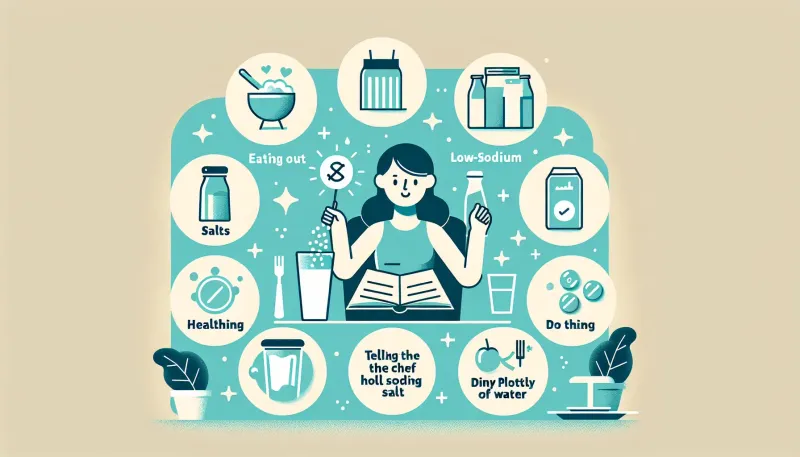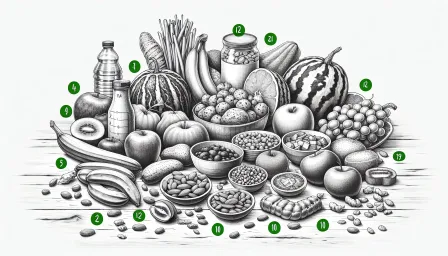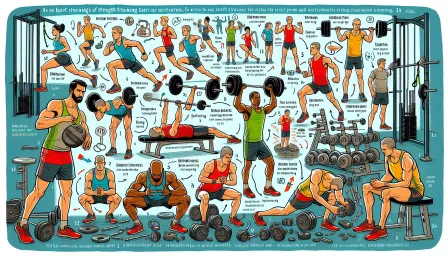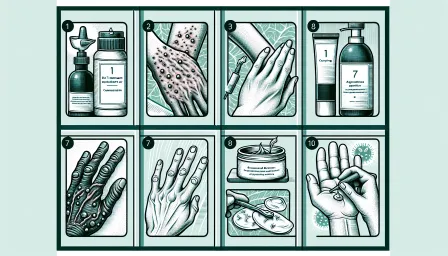Eating Out Tips for Reducing Sodium Intake: Stay Healthy While Dining Out

Discover expert eating out tips for reducing sodium intake. Learn how to make healthier choices while dining out to maintain a low-sodium diet.
Dining out is a beloved social activity and convenience for many. However, the high sodium content in restaurant foods can pose a significant challenge, especially for individuals managing hypertension, heart disease, or kidney-related health issues. Fortunately, with a bit of knowledge and strategic planning, you can enjoy eating out without compromising your health. In this article, we will provide you with expert eating out tips for reducing sodium intake and pave the way to making healthier choices while dining out.
Understanding Sodium and Its Impact on Health
Before diving into specific strategies for reducing sodium intake while dining out, it's important to understand why sodium is a concern. Sodium is an essential mineral that helps regulate fluid balance and muscle and nerve function. However, excessive sodium intake is linked to high blood pressure, heart disease, and stroke.
According to the Centers for Disease Control and Prevention (CDC), the recommended daily limit for sodium intake is less than 2,300 milligrams (mg), and the ideal limit is 1,500 mg, particularly for individuals with hypertension. Unfortunately, restaurant and packaged foods are often high in sodium, making it challenging to stay within these guidelines.
Preparation Before Dining Out
Research Restaurants and Menus
One of the most effective ways to manage sodium intake while dining out is to research restaurant options and menu items in advance. Look for restaurants that offer nutritional information on their websites. Many establishments provide specific details about sodium content in their dishes, allowing you to make informed choices before you even arrive at the restaurant.
Choose Healthier Restaurants
Opt for restaurants known for their health-conscious approach to cooking. Some establishments are more mindful of dietary restrictions and are willing to accommodate special requests. Avoid fast food restaurants and those known for heavily salted foods.
Plan Your Order Ahead of Time
Knowing what you want to order before you arrive can help you avoid impulsive choices. Choose dishes that are naturally lower in sodium, such as grilled meats, salads, and steamed vegetables, and plan to customize your order to reduce sodium.
Making Low-Sodium Choices While Dining Out
Ask for Modifications
Don't hesitate to ask for modifications to your meal. Request that your dish be prepared without added salt, and ask for sauces and dressings to be served on the side. This way, you control how much, if any, you use.
Opt for Fresh Ingredients
Select dishes that feature fresh ingredients rather than processed ones. Fresh fruits, vegetables, and lean proteins typically contain less sodium. For instance, a grilled chicken breast with a salad is often a better option than fried chicken or heavily seasoned meat.
Be Cautious with Sauces and Condiments
Sauces and condiments can be hidden sources of sodium. Soy sauce, ketchup, and salad dressings are notable culprits. Choose low-sodium versions if available or use them sparingly. For salads, consider using a squeeze of lemon or vinegar instead of traditional dressings.
Control Portion Sizes
Restaurant portions are often larger than necessary, leading to an unintentional increase in sodium consumption. Consider ordering a half portion or sharing a dish with a dining companion. Alternatively, pack half of your meal to take home for later.
Limit High-Sodium Menu Items
Be mindful of menu items that are typically high in sodium, such as soups, deli meats, and cheese-covered dishes. Opt for alternatives, such as a vegetable-based soup and a sandwich without processed meats or cheeses.
Understanding Menu Descriptions
Interpret Menu Language
Knowing how to read menu descriptions can be valuable in identifying high-sodium dishes. Words like "smoked," "cured," "pickled," and "brined" often indicate higher sodium content. Additionally, "marinated" and "battered" foods may also contain more sodium. Seek out grilled, steamed, baked, or roasted options instead.
Day-to-Day Strategies to Maintain Low Sodium Intake
Stay Hydrated
Drinking water throughout your meal can help you stay hydrated and reduce the temptation to reach for high-sodium beverages like soda or alcohol. Water can also help you feel fuller, potentially leading to eating smaller portions.
Balance Your Day's Sodium Intake
If you know you will be dining out, plan to consume lower sodium meals throughout the day to balance your overall intake. Eating a low-sodium breakfast and lunch can give you more flexibility for dinner.
Avoid Additional Salt
Restaurants often place salt shakers on every table. Make a conscious effort to avoid adding extra salt to your meal. A dish seasoned with herbs and spices can be just as flavorful without the extra sodium.
Conclusion
Reducing sodium intake while dining out may seem challenging, but it is entirely possible with the right strategies. By researching restaurants in advance, making informed menu choices, and requesting modifications, you can enjoy a delicious meal without compromising your health. Remember, the goal is to strike a balance that allows you to savor your dining experiences while maintaining a low-sodium diet. With practice and mindfulness, you can successfully manage your sodium intake and prioritize your well-being.



























